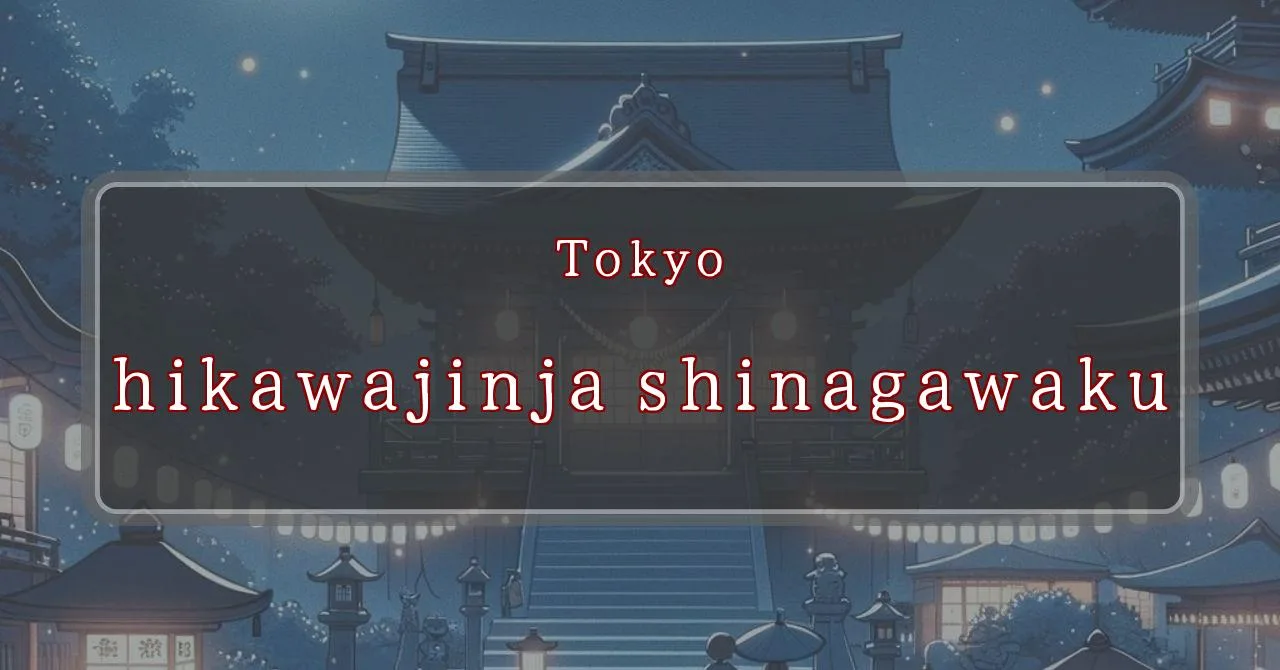Gleaming lights, vibrant festival
Basic Information
Hikawa Shrine is a Shinto shrine located in Shinagawa, Tokyo, Japan. It is dedicated to the god Susanoo-no-Mikoto, the god of storms, seas, and agriculture.
- Address: 〒141-0031 Tokyo, Shinagawa City, Nishi-Gotanda 5-6-3
- Phone Number: 03-3491-6863
- Access: 3-minute walk from Fudomae Station on the Tokyu Meguro Line
- Festival Days: September 13th (Fri), 14th (Sat), and 15th (Sun), 2024
Main Events and Attractions of the Festival
The Hikawa Shrine Festival is a lively and colorful event that attracts many visitors each year. The main events and attractions of the festival include:
Mikoshi Procession
One of the highlights of the festival is the mikoshi procession. A mikoshi is a portable shrine that is carried through the streets by a team of people. The mikoshi of Hikawa Shrine is particularly large and impressive, and it is carried by a team of over 100 people. The procession is accompanied by music and dancing, and it is a sight to behold.
Kagura Performance
Kagura is a traditional Japanese dance that is performed at Shinto shrines. During the Hikawa Shrine Festival, kagura is performed by a group of young women who are dressed in colorful costumes. The kagura is a beautiful and graceful dance that tells the stories of the gods and goddesses of Japan.
Food Stalls
No Japanese festival is complete without food stalls! At the Hikawa Shrine Festival, there are many food stalls that sell a variety of delicious treats. Some of the most popular foods include yakitori (grilled chicken skewers), takoyaki (octopus balls), and taiyaki (fish-shaped cakes filled with sweet red bean paste).
Games and Activities
There are also a number of games and activities for children at the Hikawa Shrine Festival. These include things like ring toss, beanbag toss, and goldfish scooping. There is also a petting zoo where children can interact with animals such as rabbits, goats, and sheep.
Fireworks Display
The Hikawa Shrine Festival concludes with a spectacular fireworks display. The fireworks are launched from a barge in the nearby river, and they light up the night sky with their brilliant colors. The fireworks display is a fitting end to a wonderful festival.
Blessings and Deities
Hikawa Shrine is dedicated to Susanoo-no-Mikoto, the god of storms, seas, and agriculture. He is also known as the god of protection and warding off evil spirits. Susanoo-no-Mikoto is a powerful and important god in Japanese mythology, and he is revered by many people.
- Susanoo-no-Mikoto is the god of storms, seas, and agriculture.
- He is also known as the god of protection and warding off evil spirits.
- Susanoo-no-Mikoto is a powerful and important god in Japanese mythology.
Origin and History
The origins of Hikawa Shrine are unclear, but it is believed to have been founded in the early Heian period (794-1185). The shrine was originally located in a different part of Shinagawa, but it was moved to its current location in 1603. Hikawa Shrine has a long and rich history, and it has been visited by many famous people over the years, including the Tokugawa shoguns.
- Hikawa Shrine was founded in the early Heian period (794-1185).
- It was originally located in a different part of Shinagawa.
- The shrine was moved to its current location in 1603.
- Hikawa Shrine has a long and rich history.
- It has been visited by many famous people over the years.
Tips and Notes for Visitors
If you are planning to visit Hikawa Shrine during the festival, here are a few tips and notes:
- The festival is very popular, so it is important to arrive early to avoid crowds.
- Wear comfortable shoes, as you will be doing a lot of walking.
- Bring a camera to capture the many beautiful sights of the festival.
- Be respectful of the shrine and its customs.
- Enjoy the festival and all that it has to offer!
Parking Information
There is limited parking available at Hikawa Shrine. If you are driving to the festival, it is best to arrive early to secure a parking spot. You can also park at one of the nearby train stations and take a short walk to the shrine.
- There is limited parking available at Hikawa Shrine.
- Arrive early to secure a parking spot.
- You can also park at one of the nearby train stations and walk to the shrine.
Popular Stalls and Food Carts in Recent Years
| Type of Stall | Description |
|---|---|
| Takoyaki | A staple at Japanese festivals. Characterized by a crispy outside and a creamy inside. |
| Jaga Butter | A simple yet popular snack of hot potatoes lavishly topped with melted butter. |
| Baby Castella | Small castella cakes, sweet and fluffy treats enjoyed by children and adults alike. |
| Grilled Ayu with Salt | Fresh ayu fish grilled whole with salt, a savory taste of Japanese summer. |
| Shaapin | A unique gourmet item influenced by foreign cuisine, with a chewy skin wrapping the filling. |
| Okonomiyaki | A Japanese grilled dish where you often choose your own ingredients for a personalized flavor. |
| Cotton Candy | A fluffy, sweet snack that’s extremely popular with children. |
| Chocolate Banana | A banana coated in chocolate, a fun and visually appealing dessert. |
| Kushiyaki | Various types of ingredients skewered and grilled, an easy-to-enjoy snack. |
| Yakisoba | Fried noodles mixed with a special sauce, a fast food favorite in Japan. |



